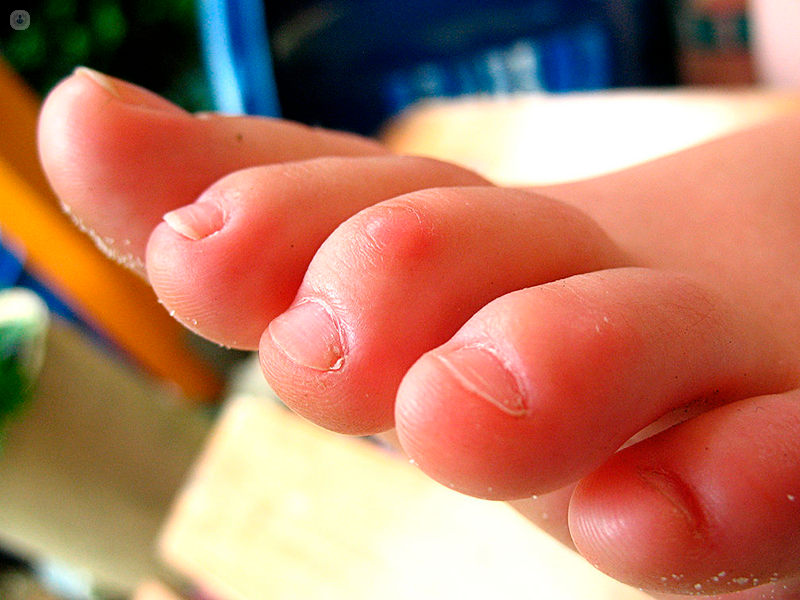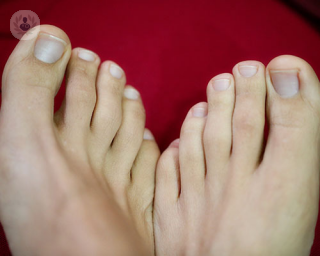Claw toe
Professor Paul Lee - Orthopaedic surgery
Created on: 07-30-2018
Updated on: 03-30-2023
Edited by: Carlota Pano
What is a claw toe?
Claw toe (also known as claw foot) is a type of foot abnormality that affects the positions of the joints in the toe. Claw toe involves the toe being bent upward from the joint at the ball of the foot, and the end of the toe being bent downwards.
If spotted early on, the toe is usually still flexible enough to be treated. If left too long, the toe can become fixed in its position and can become a permanent deformity.
Claw toe can occur at any age, but mainly affects people between the ages of 60 and 80. It is much more common in women than in men.

What are the symptoms of claw toe?
Claw toe is not generally a serious problem on its own, but it can result in discomfort, particularly if you find it hard to get shoes that fit.
Claw toe can also cause toe corns, or calluses, to develop in response to friction. These are areas of thick and hardened skin which can cause pain when you walk.
What causes claw toe?
Direct causes of claw toe include:
- Bunions
- Poorly-fitted shoes which cause your toes to bend (e.g. high-heeled shoes with pointed shoes)
- Traumatic toe injury or stroke
Claw toe is also often found in association with:
- Genetic neurological conditions, such as Charcot-Marie-Tooth syndrome and Friedreich ataxia, which can affect the position of the joints in the foot and cause wider foot problems, such as cavus foot
- Diabetes
- Rheumatoid arthritis
How is claw toe diagnosed?
The doctor will initially involve looking at your toes, the extent of the deformity, and checking how flexible your toes are. You might be asked to walk around in the clinic to see if the position of your toe is compensating for a weakness elsewhere.
The doctor might order some blood tests if they suspect you might have undiagnosed diabetes or rheumatoid arthritis.
Finally, the GP might recommend an X-ray to make the correct diagnosis and assess if there is any damage to the joint or bone. This can help them decide what treatment is most appropriate.
How is claw toe treated?
If your toes are flexible, conservative treatment might include:
- Advice on exercises you can do to keep them flexible
- Advice on what shoes to wear or how to get shoes adapted
- Splints or tape to keep your toes in position
To help with any pain, you might be offered:
- Orthotic insoles, to relieve pressure in painful areas
- Anti-inflammatory medication, if the pain is related to rheumatoid arthritis
- Trimming or protective padding for calluses
If the deformity is permanent or causing significant pain, surgery is sometimes recommended. The aim of surgery is to correct the toe deformity. Surgery might involve fixing a joint in place, or moving tissue from one part of the toe to another.
What type of specialist treats claw toe?
A podiatrist (or chiropodist) can diagnose foot problems, as well as offering conservative treatments as outlined above. This can include specialist advice on insoles and padding to protect pressure points in your feet.
Surgery on the toes is performed by an orthopaedic surgeon.
Finally, it is likely you will see a radiologist for an X-ray investigation, and a rheumatologist if your foot problems are related to rheumatoid arthritis.








